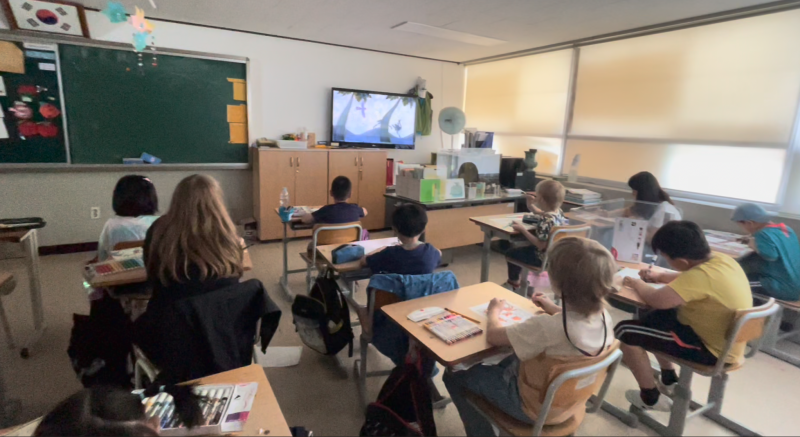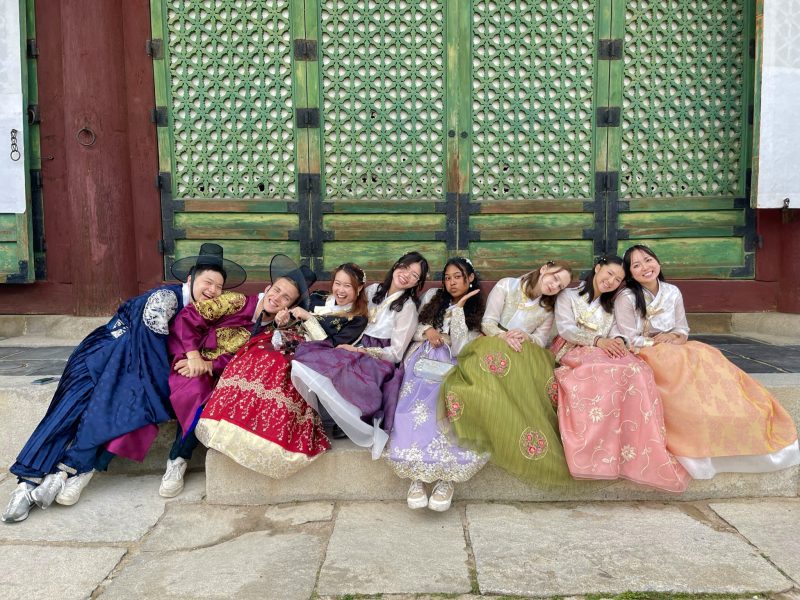Korea’s ultra-nationalistic nature is easily seen everywhere in Seoul – whether it be in history textbooks boasting about Korea’s collective national resistance against Japanese colonization, in Instagram reels satirizing expected experiences being a “real Korean,” in well-recorded photographs of the ‘red wave’ stretching across downtown Seoul to cheer on Korea’s World Cup team. Naturally, one expects this Korean pride to be reflected in the public, government-sponsored museums built to memorialize the history of the Korean people. What wasn’t expected, however, was the presence of another nation in the Seoul Museum of History: the United States.
It’s reasonable to showcase another nation, whether it be an enemy or an ally, that had an impact in the country’s history in a museum built to record and honor its past. What was surprising about the Seoul Museum of History, though, was that America’s presence in the displays of the museum most definitely couldn’t be defined as mere acknowledgement of history; the country’s connection to the States was explicitly portrayed as one that is living, continuing and impacting the nation to this day.
The introduction to the entirety of the museum – the first thing that visitors will see when they enter the building, including foreign visitors as the exhibition was in English – was essentially an ode to the service that the Americans had done for South Koreans, and a promise to continue the honorable alliance between the two countries. It also mentions the Korean War – how it was a painful fratricidal conflict that had required the selfless, righteous sacrifices of Americans, South Koreans and the United Nations. Why the war started, who dragged it on for so long, and many more inseparable accounts of the war’s history are not discussed, but in this backdrop the ‘good versus the bad’ narrative persists.
The mentioning of the Korean War doesn’t go much further than that. There were rows and rows of displays each dedicated to a specific period of Seoul’s development: from all the way back to the Joseon dynasty, to when the Japanese had controlled Gyeongseong, to the modern mega city now called Seoul. One panel depicted a change in the naming of the capital city from the Japanese-chosen Gyeongseong to the purely Korean name of Seoul. It symbolized a shift in Seoul’s history, and also reflected the struggles the Korean people had to overcome in reclaiming their capital city.
The museum then mentions how this symbolic change was interrupted by the Korean War, which was described as an agent of destruction that tore down an already struggling city. Despite the many artifacts and writings displayed for these periods, a crucial part of Seoul’s history, the entire nation for that fact, was lacking in comparison. The only panel dedicated to the occurrence of the war briefly described how the North took over, and due to the fighting on both sides, the city was utterly in ruins. The panel following this one abruptly moved onto the fighting resilience of the Korean people once again, in rebuilding their city and eventually becoming the wealthy metrapolis it is now.
Although the museum is dedicated to the city of Seoul and not to any specific wartime atrocity, the Korean War is an event in the nation’s history that reaches into every aspect of the country’s existence now and how it came to be. Thus, it is puzzling to see how little of this reality is acknowledged in the museum’s displays: the war’s immediate aftermath in Seoul was more than bombings; it consisted of physical wounds as well as sociopolitical tensions that had dragged the city’s democratic development behind but in some ways let its capital advance into economic affluency, the consequences of which can still be felt today in ways that are more subtle but still deeply ingrained. When considering such complexities, America, too, cannot be seen as a benevolent supporter of Korea, for its continuing legacies had both harmed and benefited the city and its people. These intermingled stories of the war, the city and the world are virtually absent in the museum, while the American flags still hang on the walls of the building.
Considering how detailed all other aspects of the city’s history are portrayed in the many panels of the museum, it is hard to believe that the such an absence is merely a mistaken oversight. Perhaps the consequences of this history today are so severe that the a national museum in Korea is a direct remnant of that past: its intentional blurring of a highly divisive war may signal unsettled political tensions, where mere acknowledgement of that past may have real consequences. Or maybe the people in charge – the government leaders, political figures, and to an extent the bystanding public – still hold onto the ideal of American saviorism that any discussion of the past that may potentially challenge this worldview is thrown away. Whatever the reason, it is up to us, the audience of today, to recognize and confront these gaps in history and challenge the stubborn narrative that so many have held onto for so long.
– Mingyu “Matthew” Joo



